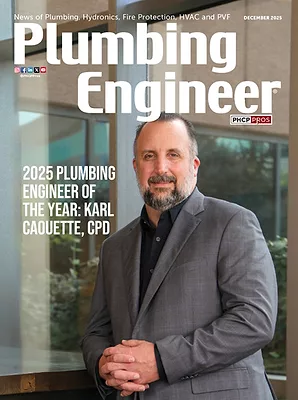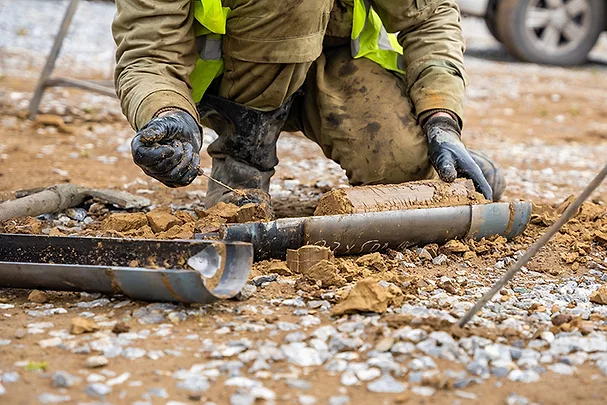Our Publications
Please select a publication below.
Plumbing Engineer

December 2025
Volume: 53
Edition: 12
Articles
Back to TopFeature
Congratulations to Karl Caouette, CPD, Plumbing Technical Director at Henderson Engineers, an empathetic, technical leader.
Read More
Feature
The Practical Application of Geothermal Resources
Geothermal systems can significantly improve building energy efficiency, especially in climates with balanced heating and cooling demands; proper system design and modeling help maximize sustainability.
Read More
Feature
Using a New Model Specification for Ground-Source Geothermal Piping Systems
Avoid confusion and costly mistakes when specifying piping materials with PPI MS-7.
Read More
Feature
Demystifying Geotechnical Reports
By focusing on key sections and collaborating with the project team, engineers can mitigate risks such as high groundwater and expansive soils, ensuring safe and cost-effective designs.
Read More
Columns
Back to TopGeothermal HVAC
The Billion-Gallon Opportunity: How Geothermal Exchange Can Solve the Refinery Water Crisis
With financial incentives from the Inflation Reduction Act, this technology not only mitigates environmental and operational risks but also creates opportunities for refineries to become
community energy assets.
Read More
Collaborative Health Care Design
Addressing Nitrous Oxide as a Greenhouse Gas, Part 2
By shifting to portable delivery systems, implementing gas capture solutions and exploring sustainable sedation methods, the healthcare industry is working to balance patient care with environmental responsibility.
Read More
Code Classroom
Rotary’s Global Impact: Plumbing Solutions for Health and Sustainability, Part 1
A detailed account of my latest Rotary mission trip to Ghana and the water projects our group worked on.
Read More










